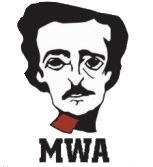
(Photo by Dawn Pisturino. Copyright 2023 Dawn Pisturino. All Rights Reserved.)
Author H.P. Lovecraft wrote in Supernatural Horror in Literature:
“The oldest and strongest emotion of mankind is fear, and the oldest and strongest kind of fear is fear of the unknown. These facts few psychologists will dispute, and their admitted truth must establish for all time the genuineness and dignity of the weirdly horrible tale as a literary form. . .
“The appeal of the spectrally macabre is generally narrow because it demands from the reader a certain degree of imagination and a capacity for detachment from everyday life. . .
“Man’s first instincts and emotions formed his response to the environment in which he found himself. Definite feelings based on pleasure and pain grew up around the phenomena whose causes and effects he understood, whilst around those which he did not understand — and the universe teemed with them in the early days — were naturally woven such personifications, marvelous interpretations, and sensations of awe and fear as would be hit upon by a race having few and simple ideas and limited experience. The unknown, being likewise the unpredictable, became for our primitive forefathers a terrible and omnipotent source of boons and calamities visited upon mankind for cryptic and wholly extraterrestrial reasons, and thus clearly belonging to spheres of existence whereof we know nothing and wherein we have no part. The phenomenon of dreaming likewise helped to build up the notion of an unreal or spiritual world; and in general, all the conditions of savage dawn life so strongly conduced toward a feeling of the supernatural, that we need not wonder at the thoroughness with which man’s very hereditary essence has become saturated with religion and superstition. . .
“Because we remember pain and the menace of death more vividly than pleasure, and because our feelings toward the beneficent aspects of the unknown have from the first been captured and formalized by conventional religious rituals, it has fallen to the lot of the darker and more maleficent side of cosmic mystery to figure chiefly in our popular supernatural folklore. . .
“With this foundation, no one need wonder at the existence of a literature of cosmic fear. It has always existed, and always will exist; and no better evidence of its tenacious vigor can be cited than the impulse which now and then drives writers of totally opposite leanings to try their hands at it in isolated tales, as if to discharge from their minds certain phantasmal shapes which would otherwise haunt them. . .”
~
Horror books and movies are just as popular now as ever. As Lovecraft says, there seems to be a human need to express and face our inner demons and fears. Writers do this through writing. Stephen King references personal experiences of rejection and abuse in his books. Moviemakers do this on film. Special effects can either enhance or detract from the subtle effects of horror. It takes an absolute master to make a compelling horror film. One of the best ghost stories, written by Shirley Jackson, is The Haunting of Hill House. In 1963, Warner Bros. released the movie version, The Haunting, directed by Robert Wise. The movie relies on subtlety rather than overt special effects to create a feeling of dread and horror. It’s one of the scariest movies I’ve ever seen.
As we travel through the month of October, the glamour of Fall, and the impending scare fest of Halloween, what are your personal demons and fears? Have you faced them? How do you cope with them? Have you overcome your fear?
Dawn Pisturino
October 18, 2023
Copyright 2023 Dawn Pisturino. All Rights Reserved.































